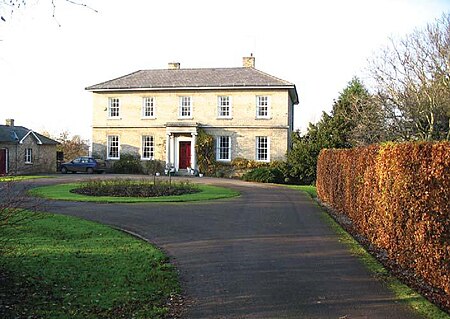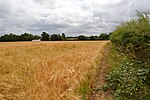Sturgeons House
City of ChelmsfordCountry houses in EssexGrade II listed buildings in EssexModel farmsUse British English from January 2015

Sturgeons House is a Grade II listed country estate located west of the small village of Writtle in Essex, England. At its height, the estate comprised around 500 acres (2,000,000 m2). However, it currently holds only around 6 acres (24,000 m2) of ground. The house is currently under renovation, including an extension to the rear of the property. The house, along with the surrounding barns, is an example of an early model farm.
Excerpt from the Wikipedia article Sturgeons House (License: CC BY-SA 3.0, Authors, Images).Sturgeons House
Cow Watering Lane, Chelmsford Writtle
Geographical coordinates (GPS) Address Nearby Places Show on map
Geographical coordinates (GPS)
| Latitude | Longitude |
|---|---|
| N 51.7365 ° | E 0.4063 ° |
Address
Writtle University College Cow Watering Campus
Cow Watering Lane
CM1 3SD Chelmsford, Writtle
England, United Kingdom
Open on Google Maps






